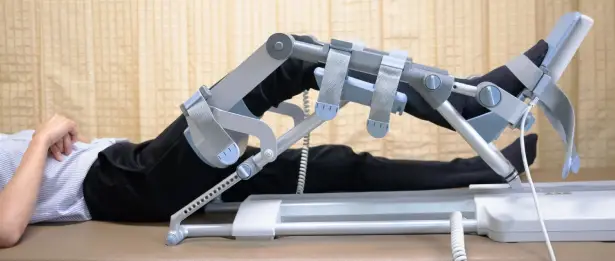Spine Surgery: What It Is, Who It Helps, and When It’s Needed
Spine surgery has become much more precise and focused on the patient’s needs compared to the past. The main aim is to restore function, reduce pain, and protect nerves while causing as little tissue damage as possible. Surgeons create a plan based on each person’s symptoms, exam, and imaging, always prioritizing safety and lasting relief. When other treatments have not worked, the right surgery can make a big difference. This guide explains the main procedures, how doctors decide who is a candidate, what risks are involved, and what recovery is like.
Indications and Candidacy: When Surgery Becomes the Right Step
Surgery is considered when a clear structural problem is causing persistent symptoms or objective deficits. Typical indications include a focal disc herniation compressing a nerve root, lumbar canal narrowing that limits walking or standing, cervical nerve compression that produces radiating arm pain, numbness, or weakness, and mechanical instability such as spondylolisthesis that causes painful motion. Surgery is also urgent when there is progressive neurological loss, significant spinal cord compression in the neck, or red flags such as bowel or bladder changes suggesting severe compression.

Being a candidate for surgery means the problem and the procedure are a good match. The best results happen when what is seen on MRI or CT scans matches the patient’s symptoms and exam. People with severe or complex spine issues may need more extensive surgery, while those with a single, focused problem often do well with minimally invasive or endoscopic methods. A person’s overall health, bone strength, and any past surgeries also help shape the plan.
Decompression Procedures: Freeing the Nerves
When pain comes from a pinched nerve, decompression is the central act. Microdiscectomy removes the loose or protruding disc fragment that irritates a nerve and is a common treatment for sciatica caused by lumbar disc herniation.
Laminectomy or laminotomy opens space in a narrowed spinal canal or nerve tunnel, easing crowded nerves and reducing leg heaviness and walking limitations typical in stenosis. In the neck, posterior foraminotomy enlarges the nerve exit when the compression is primarily foraminal without major instability.

Surgeons often use magnification and special lighting to perform these procedures through small cuts. The goal is to give the most relief with the least damage to surrounding tissue. If nerves have been compressed for a long time, recovery can be slow. Usually, pain gets better before numbness or weakness improves.
Fusion Procedures: Stabilizing Painful Motion Segments
Fusion connects two or more vertebrae to stop abnormal or painful motion. In the lumbar region, common methods include transforaminal lumbar interbody fusion, posterior lumbar interbody fusion, oblique lateral interbody fusion, and anterior lumbar interbody fusion. Each approach offers a different corridor for removing the damaged disc, inserting a spacer or cage to restore height and alignment, and securing the level with screws and rods. In the cervical spine, anterior cervical discectomy and fusion is the standard fusion for many disc driven problems.

Fusion is used when pain comes from instability, when decompression would make the spine unstable, or when a deformity needs to be corrected and supported. Success depends on the bone healing properly, the surgeon’s skill, and patient factors like not smoking and having good nutrition. Fusion is not the first choice for every problem and is best when the benefits are greater than the loss of motion at the fused area.
Minimally Invasive Spine Surgery: Precision with Less Disruption

Minimally invasive spine surgery uses small cuts, tube shaped tools, and special instruments to perform decompression or fusion with less muscle disruption. This approach usually means less blood loss, fewer wound problems, shorter hospital stays, and a quicker early recovery. Common examples include microdiscectomy, minimally invasive laminectomy for stenosis, and minimally invasive TLIF for stabilization.
Choosing the right patients for minimally invasive surgery is important. People with a single herniated disc or stenosis usually benefit the most. Those with more complex or unstable spine problems may need a combination of techniques or open surgery for better results. Even if recovery seems quick at first, bone healing still takes months, so activity increases gradually.
Cervical Spine Surgery: Protecting the Spinal Cord and Nerves
Cervical pathology can present with neck pain, radiating arm pain, numbness, diminished dexterity, clumsiness, imbalance, or even subtle changes in handwriting. When conservative care does not relieve symptoms or when signs of spinal cord involvement are present, a surgical plan is considered.

Anterior cervical discectomy and fusion is a common operation in which the damaged disc is removed from the front of the neck, the nerves and spinal cord are decompressed, and the level is stabilized with a spacer and plate. In selected patients, cervical disc replacement preserves motion and may reduce stress on adjacent levels. Posterior foraminotomy addresses nerve root compression at the neural foramen without fusion when stability is intact.
Recovery after neck surgery is often quick. Many people go home the same day or after one night. Sore throat and neck stiffness usually improve within a few days to weeks, and most can start light activities in one or two weeks. Fusion healing takes months, and activity levels are adjusted for each person.
Thoracic and Lumbar Considerations: Region Specific Nuances
The thoracic spine, located behind the rib cage, is naturally stable, which makes surgery in this area more challenging. Thoracic spine surgery is less common and usually done only for problems like disc herniations pressing on the spinal cord or for correcting deformities.

Careful planning, advanced imaging, and nerve monitoring help manage risks, but surgery is considered only when truly needed.
The lower back is the most common area for spine surgery because it handles a lot of daily stress.
Problems like herniated discs causing sciatica or spinal canal narrowing that leads to leg pain often improve with targeted decompression. If there is also instability, fusion may be added. The best results happen when symptoms match what is seen on imaging and the surgery targets the real source of pain.
Endoscopic and Laser Terminology: Tools Versus Techniques

Endoscopic spine surgery is a minimally invasive method that uses a camera and thin instruments through very small openings to treat issues like herniated discs or narrowing around nerves. Benefits include tiny cuts, less discomfort after surgery, and a quicker early recovery when used for the right cases. The surgeon’s experience and choosing the right patients are important for good results.
A laser is not a separate type of surgery but a tool sometimes used during certain steps. Good results depend on a correct diagnosis and making sure the nerve is fully relieved or the spine is stable, not just on using a laser. Patients should focus on the treatment that fits their problem and choose a surgeon with strong experience in that approach.
Risks and How Teams Reduce Them
Spine surgery is usually safe when done by experienced teams, and modern practices aim to lower the risk of problems and catch them early if they happen. Possible risks include infection, bleeding, blood clots, nerve or spinal cord injury, and leaks of spinal fluid. In fusion surgeries, there is a chance the bone may not heal fully. Problems with hardware placement are rare with today’s technology but can still occur.
Reducing risk starts before surgery. Surgeons encourage patients to stop smoking, control diabetes and blood pressure, eat well, get enough vitamin D, and manage medications, especially blood thinners. During surgery, strict cleanliness, antibiotics, nerve monitoring, and advanced imaging or robotic tools help keep things safe. After surgery, getting up early, following activity and wound care instructions, and watching for signs like fever, drainage, swelling, chest pain, new weakness, or severe pain can help catch problems early. If any of these happen, patients should get checked right away.
Recovery Milestones and Rehabilitation
Most people recover in stages. Getting up and moving starts as soon as it is safe, often the same day or the next morning after surgery. Pain is managed with different methods, not just opioids, and may include anti-inflammatory medicines, nerve pain treatments, and things like ice or changing positions.
Some surgeries require a temporary brace for comfort and to remind you how to move safely.
Physical therapy begins with gentle movements and posture exercises, then moves on to building core and hip strength, balance, and safe ways to move in daily life.

After minimally invasive decompression, many people can return to desk work in a few weeks. Fusion patients take longer as the bone heals. Even if pain goes away quickly, it’s important to increase activity slowly to protect long-term results.
Costs, Coverage, and Practical Planning
The cost of spine surgery depends on where it is done, how complex the procedure is, whether implants are needed, and how long you stay in the hospital. Patients should ask for a detailed estimate that includes surgeon fees, hospital charges, anesthesia, imaging, implants, and follow up visits.
Most medically necessary surgeries are covered by insurance, but approval is usually needed first. Coverage for certain tools or technologies depends on the procedure and medical need, not the brand name. Talking openly with your care team and insurance company can help avoid surprises and set clear expectations.
Choosing the Right Surgeon and Building Confidence
Both neurosurgeons and orthopedic spine surgeons can perform all types of spine surgery. What matters most is the surgeon’s experience with your condition and the procedure you need. Ask about how many surgeries they do, their results, and what types of techniques they use, such as minimally invasive, endoscopic, or robotic methods. If your case is complex or involves several levels, getting a second opinion can help you feel more confident and may improve your plan.
The main idea is to find the right match between the surgery and the problem. When the operation fits your needs and you take an active role in getting ready and recovering, results are usually good and long-lasting. With good information and a skilled team, you can go from feeling overwhelmed to having a clear plan.
Liv Hospital Spine Surgery
Liv Hospital's Spine Surgery department is a pioneer in solving spine problems in the most effective way by using state of the art medical equipment and advanced surgical techniques. The expert staff consists of experienced surgeons and specialist nurses who have mastered the complexity of spinal surgery.
With its patient oriented approach, Liv Hospital provides a comfortable treatment process by offering special solutions for the spinal health of individuals. With its technical competence, strong technological infrastructure and expert staff, Liv Hospital aims to maximize patient satisfaction and health in the field of spinal surgery.
For more information about our academic and training initiatives, visit Liv Hospital Academy .
Frequently Asked Questions for Spine Surgery
What should I avoid after spine surgery ?
Avoid bending, lifting, and twisting early on, as well as high impact activity and nicotine. Follow incision care instructions, adhere to any bracing plan, and progress activity in stages as outlined by your team.
Who performs spine surgery, a neurosurgeon or an orthopedic surgeon ?
Both specialties perform spine surgery. The key is a surgeon with significant experience in your condition and the specific procedure, a full spectrum of approaches, and strong patient outcomes.
How long does cervical spine surgery take to heal ?
Soft tissues settle in weeks while fusion maturation takes months. Many patients resume light activities within 1 to 2 weeks and gradually build up under clinical guidance.
What is endoscopic or laser spine surgery ?
Endoscopic surgery uses a small camera and specialized instruments through tiny portals to decompress targeted pathology. A laser is a tool rather than a procedure and is less important than complete decompression and correct indication. Outcomes depend on the matching technique to the diagnosis.
What is spine fusion surgery, and what is the success rate ?
Fusion stops painful motion by connecting vertebrae with grafts, cages, and instrumentation. When the pain generator is instability or compression that also needs decompression, success rates for pain relief and function are high, especially with nicotine avoidance and guided rehab.
What is decompression surgery of the spine ?
It is a set of operations that remove bone or disc material that is crowding nerves. Laminectomy, laminotomy, and microdiscectomy are common examples that free nerves to relieve leg or arm pain and walking intolerance.
What is cervical spine surgery, including ACDF ?
It is a surgical procedure to relieve pressure on the cervical nerves or the spinal cord. ACDF removes a diseased disc from the front, decompresses nerves, and stabilizes the level with a spacer and plate. Other options include posterior foraminotomy or motion-preserving disc replacement in selected patients.
